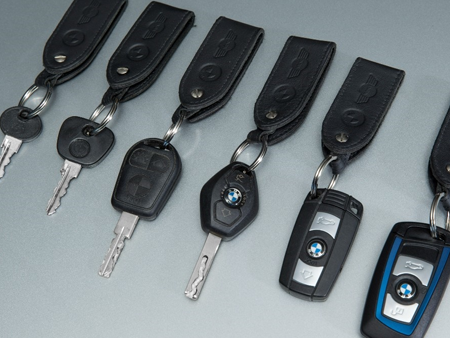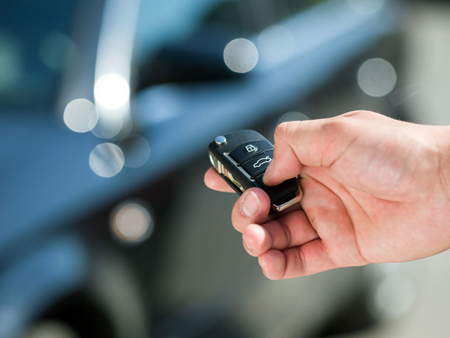The Vital Role of Car Keys in Vehicle Theft Prevention

In the realm of automotive security, car keys are often hailed as the first line of defense against vehicle theft. These small yet mighty devices play a pivotal role in safeguarding our rides and deterring would-be thieves from making off with our prized possessions. From traditional mechanical keys to advanced electronic key fobs, car keys have evolved significantly over the years, incorporating sophisticated security features to stay one step ahead of potential threats. In this blog, we’ll explore the crucial role of car keys in vehicle theft prevention and highlight the key technologies that help keep our cars safe and secure.
Evolution of Car Keys
Gone are the days of simple metal keys that could be easily duplicated or bypassed by enterprising thieves. Today’s car keys are equipped with advanced security features designed to thwart unauthorized access and protect against theft. The evolution of car keys can be traced through the following key technologies:
 Mechanical Keys: Traditional mechanical keys rely on physical cuts and grooves to engage with the tumblers inside the lock cylinder and start the vehicle. While simple and reliable, mechanical keys offer limited security and are susceptible to duplication or unauthorized copying.
Mechanical Keys: Traditional mechanical keys rely on physical cuts and grooves to engage with the tumblers inside the lock cylinder and start the vehicle. While simple and reliable, mechanical keys offer limited security and are susceptible to duplication or unauthorized copying.- Transponder Keys: Transponder keys, introduced in the late 1990s, incorporate a small electronic chip embedded within the key head. This chip communicates with the vehicle’s immobilizer system, sending a unique code that must match the vehicle’s onboard computer to start the engine. Transponder keys provide an added layer of security by preventing unauthorized key duplication and hot-wiring attempts.
- Keyless Entry Systems: Keyless entry systems, also known as remote keyless entry (RKE) or key fobs, allow drivers to lock, unlock, and start their vehicles remotely using wireless communication technology. Keyless entry systems use encrypted signals to communicate with the vehicle’s onboard computer, making them resistant to unauthorized interception or cloning.
- Proximity Keys: Proximity keys, or smart keys, take keyless entry to the next level by allowing drivers to start their vehicles without physically inserting the key into the ignition. Instead, proximity keys communicate with the vehicle’s onboard computer via radio frequency identification (RFID) or near-field communication (NFC) technology, automatically unlocking the doors and enabling engine ignition when in close proximity to the vehicle.
Key Role in Vehicle Theft Prevention
Car keys serve as the linchpin of vehicle theft prevention, acting as both a physical barrier and an electronic safeguard against unauthorized access. The role of car keys in vehicle theft prevention can be summarized as follows:
 Access Control: Car keys control access to the vehicle, serving as the primary means of unlocking doors, starting the engine, and activating security systems such as alarms and immobilizers. By requiring the correct key or key fob to operate the vehicle, car keys prevent unauthorized individuals from gaining entry or driving away with the vehicle.
Access Control: Car keys control access to the vehicle, serving as the primary means of unlocking doors, starting the engine, and activating security systems such as alarms and immobilizers. By requiring the correct key or key fob to operate the vehicle, car keys prevent unauthorized individuals from gaining entry or driving away with the vehicle.- Authentication: Modern car keys use advanced encryption and authentication protocols to verify the identity of the key and ensure that only authorized keys can communicate with the vehicle’s onboard computer. This authentication process helps prevent key cloning, signal interception, and other forms of electronic hacking.
- Deterrence: The visible presence of security features such as transponder chips, remote keyless entry, and immobilizer systems serves as a deterrent to potential thieves, signaling that the vehicle is equipped with advanced anti-theft technology. Thieves are less likely to target vehicles with robust security systems that pose greater challenges to overcome.
Best Practices for Car Key Security
While car keys play a crucial role in vehicle theft prevention, it’s essential for vehicle owners to take proactive measures to protect their keys and minimize the risk of theft. Some best practices for car key security include:
 Keep Keys Secure: Store car keys in a safe and secure location when not in use, away from doors, windows, or other vulnerable access points where they could be easily stolen or accessed by intruders.
Keep Keys Secure: Store car keys in a safe and secure location when not in use, away from doors, windows, or other vulnerable access points where they could be easily stolen or accessed by intruders.- Avoid Key Tampering: Be cautious of unauthorized individuals attempting to duplicate or tamper with your keys. Only trust reputable locksmiths or dealerships for key duplication or replacement services, and never leave keys unattended in public places.
- Enable Security Features: Activate built-in security features such as keyless entry, alarm systems, and immobilizers to provide additional layers of protection against theft. Familiarize yourself with the operation of these features and use them consistently to secure your vehicle.
- Invest in Key Protection: Consider investing in key protection accessories such as key wallets, signal-blocking pouches, or steering wheel locks to deter theft and prevent unauthorized access to your vehicle’s key fob signals.
- Be Vigilant: Remain vigilant of your surroundings and report any suspicious activity or attempts at unauthorized access to your vehicle or keys to law enforcement authorities.
Conclusion:
car keys play a vital role in vehicle theft prevention by controlling access, authenticating users, and deterring potential thieves. From traditional mechanical keys to advanced electronic key fobs, car keys have evolved to incorporate sophisticated security features that make unauthorized access and theft more difficult. By understanding the importance of car keys in vehicle security and implementing best practices for key protection, vehicle owners can minimize the risk of theft and ensure the safety and security of their prized possessions on the road.

 Mechanical Keys: Traditional mechanical keys rely on physical cuts and grooves to engage with the tumblers inside the lock cylinder and start the vehicle. While simple and reliable, mechanical keys offer limited security and are susceptible to duplication or unauthorized copying.
Mechanical Keys: Traditional mechanical keys rely on physical cuts and grooves to engage with the tumblers inside the lock cylinder and start the vehicle. While simple and reliable, mechanical keys offer limited security and are susceptible to duplication or unauthorized copying. Access Control: Car keys control access to the vehicle, serving as the primary means of unlocking doors, starting the engine, and activating security systems such as alarms and immobilizers. By requiring the correct key or key fob to operate the vehicle, car keys prevent unauthorized individuals from gaining entry or driving away with the vehicle.
Access Control: Car keys control access to the vehicle, serving as the primary means of unlocking doors, starting the engine, and activating security systems such as alarms and immobilizers. By requiring the correct key or key fob to operate the vehicle, car keys prevent unauthorized individuals from gaining entry or driving away with the vehicle. Keep Keys Secure: Store car keys in a safe and secure location when not in use, away from doors, windows, or other vulnerable access points where they could be easily stolen or accessed by intruders.
Keep Keys Secure: Store car keys in a safe and secure location when not in use, away from doors, windows, or other vulnerable access points where they could be easily stolen or accessed by intruders.